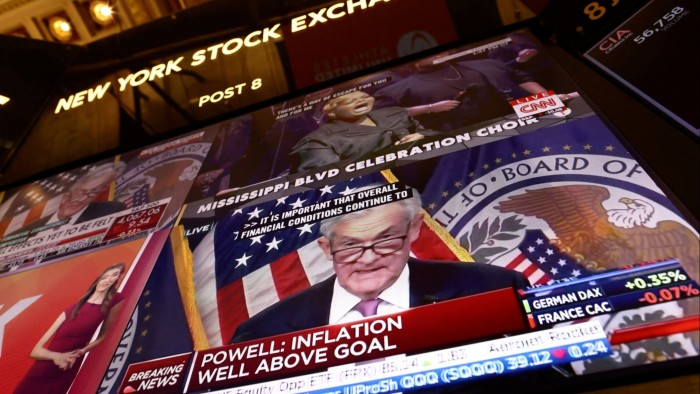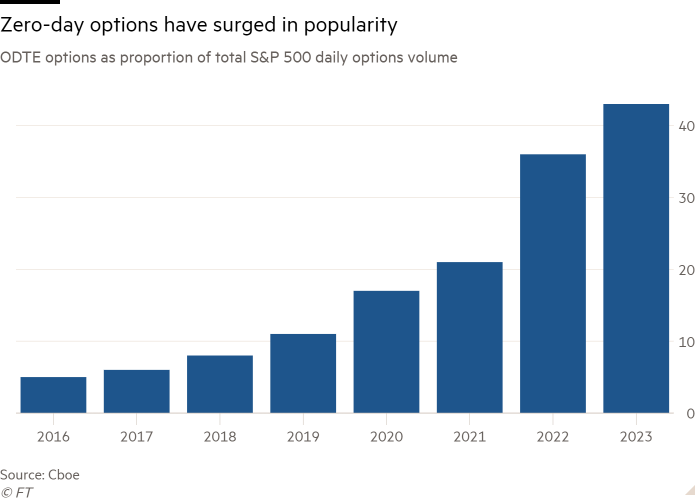Surge in zero-day options sparks fears over market volatility

Roula Khalaf, Editor of the FT, selects her favourite stories in this weekly newsletter.
The market for extremely short-dated options on US stock market moves has boomed in recent weeks, sparking fears among analysts that the daily bursts of activity could be causing sharp sell-offs in equities.
So-called zero-day options, which allow traders to take targeted positions in stock markets around events such as economic data releases or monetary policy meetings, have surged in popularity since the start of the coronavirus pandemic.
Zero-day options on Wall Street’s S&P 500 index now account for 43 per cent of overall S&P 500 options volume, compared with just 6 per cent in 2017, according to data from Cboe Global Markets.
Analysts say demand for zero-day contracts has further surged in the past three weeks as financial markets have become more volatile. Last week global bond yields jumped to multiyear highs as investors adjusted their expectations that central banks would soon be able to start cutting interest rates.
Four of the all-time top 10 days for S&P 500 zero-day options purchases have come in August, according to Nomura, over which time the benchmark US index has slipped more than 4 per cent. As a proportion of total daily S&P 500 options, zero-day options twice accounted for 55 per cent in the week to August 11, an all-time high.
Against a backdrop of thin summer liquidity, the options’ popularity is now fuelling price swings in the benchmark index itself, according to some analysts. They fear a repeat of 2018’s “Volmageddon” event, where a jump in trading volatility brought down several short volatility exchange traded funds.
Goldman Sachs suggested that on Tuesday tens of thousands of orders for bearish zero-day put options worth a cumulative $45bn had forced market makers who need to manage their exposures to buy protective hedges. This pushed them out of equities and forced the S&P 500 down 0.4 per cent in just 20 minutes, said Goldman.

Record-high purchases of zero-day options have been “a clear contributor to the intraday volatility we’re seeing [month to date] thus far”, said Charlie McElligott, an equity derivatives strategist at Nomura. Their overuse raises the chances that a 1 per cent sell-off turns into a 3 per cent decline, he added.
However, Cboe Global Markets, the world’s largest options exchange, disputes the view that the contracts are exacerbating intraday volatility.
“The order flow is remarkably balanced between buys and sells, users are diverse and the use cases are diverse,” said Mandy Xu, head of derivatives market intelligence at Cboe.
“People are using these products to hedge, trade tactically, for systemic strategies and for yield enhancement,” she said. “If volume is evenly balanced, as it is the vast majority of the time, there wouldn’t be an impact on market volatility.”
JPMorgan research suggests that institutional investors, including hedge funds and asset managers, account for the bulk of demand. Retail traders also dabble in the market — Reddit’s popular Wall Street Bets forum is awash with comments from day traders who say they have won big or lost thousands of dollars on zero-day options strategies.
One self-declared “degenerate gambler” purportedly made $32,000 on Wednesday alone, though they admitted their tactic of buying bullish zero-day call options after a market dip was high risk: “Would not recommend”.
Comments